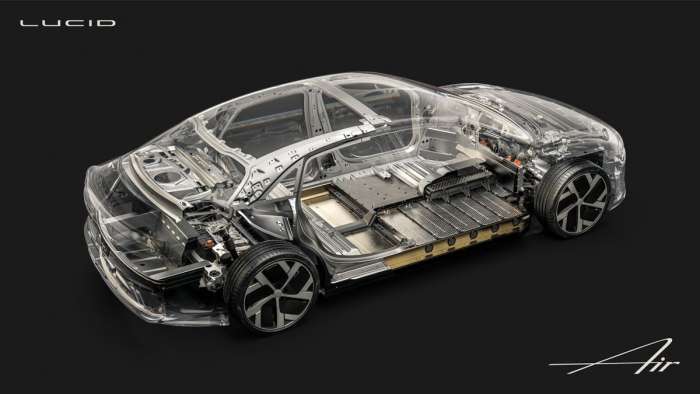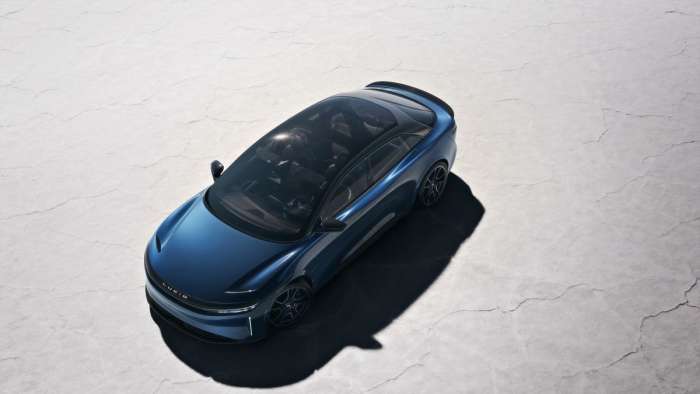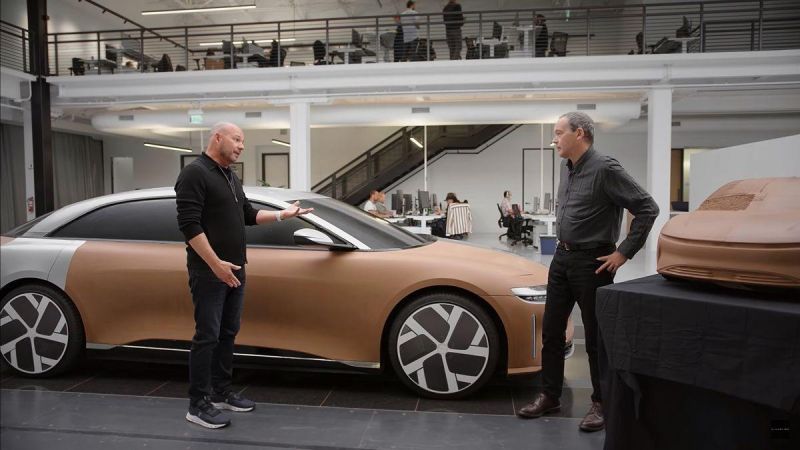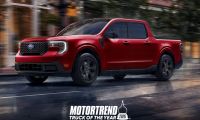Derek Jenkins, Lucid's VP of Design and Brand, thinks modern EV design is too informed by traditional internal combustion vehicles and needs to strike out on its own with new shapes that better fit the electric vehicle's architecture.
Speaking with Matt Bubbers in an interview with Canada's Globe and Mail, Jenkins said that he believes future EVs will take on their own distinct forms, but that we're not completely ready yet with the current state of EV charging infrastructure and battery technology.

Design Dictated by Aero
As it stands today, much of an electric vehicle's styling is dictated by the need to eke out every inch of range available from its battery. With chargers still relatively few and far between compared to gas stations, and EVs in a relative infancy compared to ICE vehicles, the quest for efficiency is ultimately what decides many design decisions.
Jenkins says that making a vehicle go further on a kilowatt of power allows Lucid to remove some batteries which lowers weight and has a knock-on effect of improving handling. The Lucid Air is currently the most aerodynamically slippery vehicle on the market, and its record-breaking efficiency and range are in direct correlation with that fact.
Room For Improvement
Jenkins states that many electric motors, especially the ones found in the Lucid Air which make 650 horsepower and can fit in carry-on luggage, don't need the amount of space they're given in current EV designs which are informed by internal combustion cars. ICE vehicles need wide facias to feed the engine with air and keep it cool, whereas Jenkins believes that EVs should be more jet-like with clean lines.

Related Story: Tuning The 1200+ Horsepower Lucid Air Sapphire
He likens the current crop of EVs to early internal combustion cars, which retained their horse-and-buggy looks long after their four-legged powerplants were replaced with pistons. Jenkins doesn't mention it, but we'd guess that current EVs resemble ICE vehicles for another reason: familiarity. People don't tend to like radical change, especially when they're putting down tens of thousands of dollars for it, and we have an inkling that this plays a role too.
Future Designs
Jenkins believes that EVs in general will become more egg-shaped than they already are in the short term, while further into the future they'll make use of more efficient technology and more ubiquitous charging stations to diverge from one another and become truly unique.
He also mentions a third model joining the Lucid lineup around halfway through the decade, which should be less expensive than the Air and Gravity, more youthful and more sporty. If you're having trouble picturing a vehicle more sporty than the upcoming 1200+ horsepower Lucid Air Sapphire you're not alone. We can't wait to see what Lucid come up with and share it with you here.
Related Story: Lucid Annual Shareholders Meeting Takes Place On April 24th
Images by Lucid Motors licensed by CC BY 4.0.
James Walker is an Automotive Journalist at Torque News focusing on Lucid Motors. If it's got wheels he's interested, and he's looking forward to seeing what kind of cars the EV revolution brings us. Whether it's fast, slow, new, or old, James wants to have a look around it and share it in print and on video, ideally with some twisty roads involved. You can connect with James on Twitter, Instagram, and LinkedIn.











